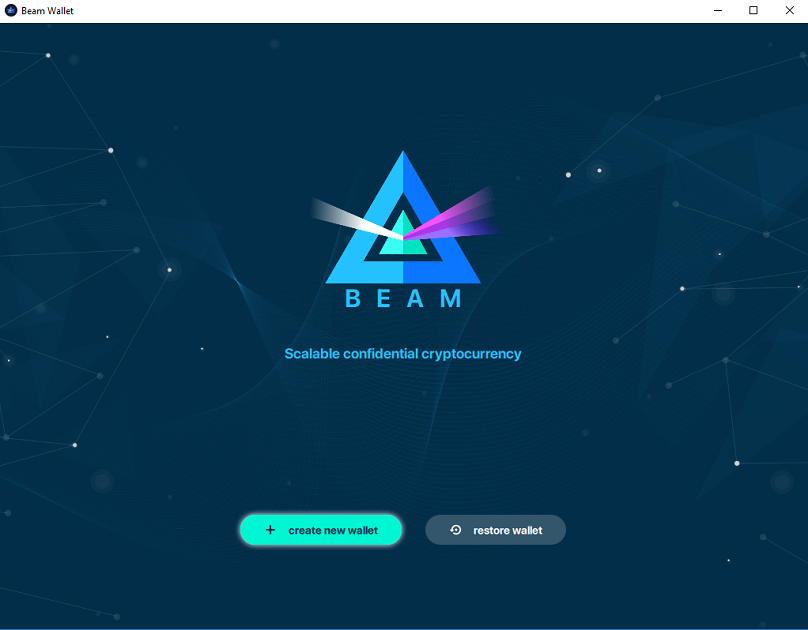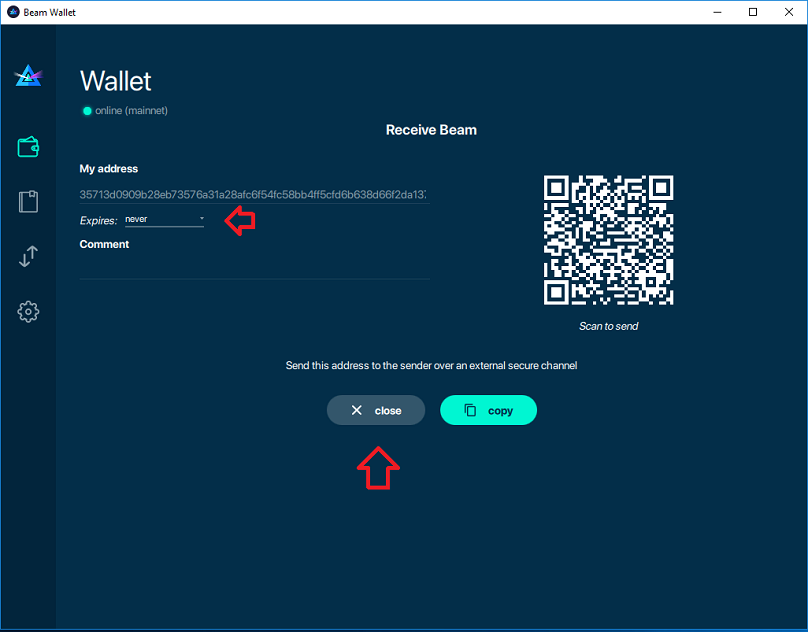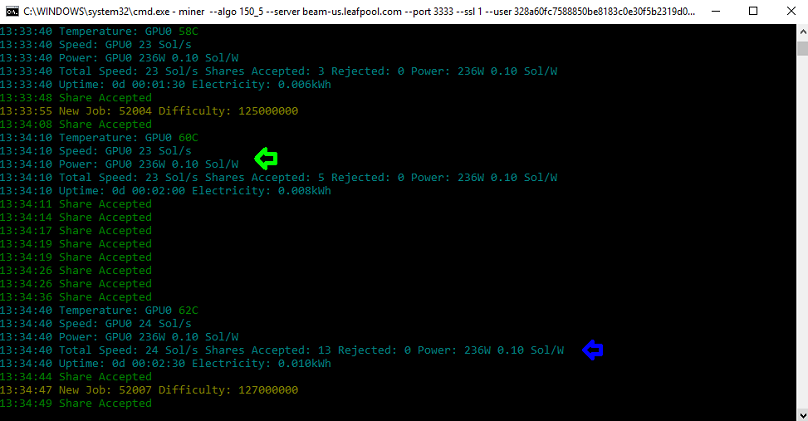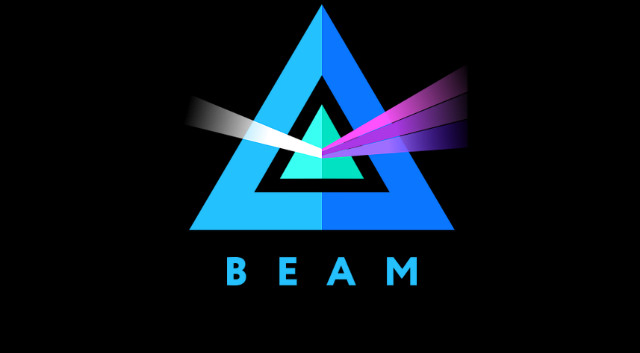Beam is open-source cryptocurrency running on the Mimblewimble blockchain. The Beam development team seeks to create a new privacy-enhanced alternative to the original Bitcoin blockchain with a user-friendly approach and a startup mindset. Beam was the first cryptocurrency under the Mimblewimble protocol and later followed by the Grin coin.
Beam is set up on an additional technology known as Dandelion. The technology has its focus on obscuring network traffic activity through randomizing the pathways used by transactions to get dispersed on a blockchain as a way of enhancing privacy. In the upcoming developments, Beam team will set up an optional feature of transparency. This feature will enable users to decide for themselves which information will be available and to which parties.
How Does The Mimblewimble Blockchain Work?
The idea of Mimblewimble blockchain first appeared in 2016. This protocol seeks to offer an alternative way of constructing payments with the end goal of having enhanced privacy and efficiency. In short, the network wants to make payments confidential and untraceable. The protocol is a combination of Confidential Transactions (CTs) and Pedersen Commitments. Furthermore, it is important to note that CTs are complex, unlike other cryptographic payments.
The complexity arises from the needed proofs for every transaction. However, Mimblewimble seeks to eliminate the complexities associated with CTs by removing the scripting behavior. This method can compromise security and privacy and Mimblewimble solves this challenge by combining the blinding factors and dummy outputs to have an enhanced security and privacy level of the CT. Furthermore, the protocol uses a transaction aggregation method that ensures less data on transaction history is stored on the blockchain. The reduced history data contains block headers, system state, and the output signatures of the ‘dummy outputs.’ However, additional testing is still underway to ensure the validity of this technology.
BEAM’s Design
The Beam protocol is coded in C++. Beam sees itself as a confidential store of value coin with a fixed issuance schedule akin to bitcoin. Additionally, Beam permits non-interactive offline transactions through the secure BBS system. The Beam development team is working on various upgrades of the protocol. In the coming upgrades, the team will set up atomic swaps with Bitcoin, hardware wallet, mobile wallet, lightening network PoC and BTCPay Server integration. The protocol is set to have a clear cathode, a mining algorithm hard fork, mobile wallet, web wallet with multisig support.
BEAM’s Outstanding Features
The Mimblewimble protocol alongside the Beam cryptocurrency is attracting attention due to its unique features. Here are some of the outstanding aspects of Beam.
1. Auditable Wallet
BEAM has an auditable wallet. This feature targets the regulation aspect of businesses. Beam is working on a wallet for businesses that meet laid down regulations in different jurisdictions. The wallet will generate extra public and private keys meant for auditing. The public keys are then availed to authorities for auditing since all transactions are tagged, hence promoting transparency in payments.
2. Compact Blockchain
The Beam project keeps the blockchain compact. According to Beam, the project has a model that reuses transaction kernels to authenticate subsequent payments. Kernels for each Mimblewimble transaction remains in the system because all intermediary transaction commitments do not exist. With the Beam model, the remaining kernels are consumed without altering the transaction irreversibility principle. Beam deploys the use of a multiplier for old kernels, by the same user who has visibility of the old kernel, for the new transaction. All these transactions are subject to a fee refund set up by Beam.
3. Bulletin Board System (BBS)
Normally, when setting up authentic payments on the Mimblewimble blockchain, all participants collaborate and select binding factors that balance. The process entails different steps and communication is key in realizing the payments. To facilitate this process, Beam has a Bulletin Board System (BBS). This system operates on Beam full-nodes for asynchronous negotiation of payments and it uses the numerous Merkle tree structures for tracking different aspects of the blockchain. It uses a Radix-Hash tree structure for some of their trees which are a modified Merkle tree that is also a binary search tree. This offers different features that the standard Merkle trees does not have which they exploit in the implementation stage.
4. Business Auditability Feature
As a way of catering for businesses, Beam separated the platform’s development into two avenues: Beam Core and Beam Compliance. Beam Core deals with technical innovation of the network’s design while Beam Compliance is for the opt-in compliance and auditability aspects of the network. Beam Compliance serves directly to businesses looking for auditability from regulators while at the same time retaining privacy.
Governance of BEAM
Beam’s approach to governance is similar to a startup just like Zcash. The protocol has developers and contributors who work in a normal company setting. The Beam Foundation currently oversees the project where core developers are members. Furthermore, Beam continues to put the focus on usability especially on the side of businesses and they need to show financial trails of transactions for auditors when called upon.
With a focus on usability, Beam has used significant resources in setting up a GUI wallet and mobile wallet. The two wallets will propel Beam’s mass adoption in return growing the number of transactions. With increased transactions, we will have better privacy on the Mimblewimble blockchain. The Beam wallet is available on MacOS, Windows, and Linux operating system while the development team is working on a light version.
As seen earlier, Beam is an open source protocol with contributors playing a big role in coming up with the code. Additionally, from the onset of the project, Beam developers had no plans of rolling out an ICO as a way of funding. Initially, Beam attracted investors for the first funding and sustainability. The investors placed 20% of every mining block incentives into a treasury for funding future development and promotion of Beam.
Beam’s Monetary Policy
Beam’s monetary policy uses a deflationary model that comes with a timely halving of the mining reward and maximum supply of Beam of 210 million. The first year has a block reward of 80 Beam coins for every block for each year. Consequently, the reward is set to halve after four years until the 133rd year. Notably, Beam has not issued a specific mining reward structure. Beam also puts an emphasis on the private store of value, unlike other cryptocurrencies that focus on peer to peer digital cash. Beam rewards are on a monthly basis to investors, advisors, and developers.
Proof of Work
The BEAM project uses the Equihash Proof of Work as its mining algorithm. Initially, Equihash was a memory-hard PoW algorithm. It depended on memory-usage to achieve Application Specific Integrated Circuit (ASIC) resistance. The goal was to have an efficient algorithm to operate GPUs in place of ASIC miners. Beam’s development team will hard fork the protocol several times to adjust the mining algorithm to allow for ASIC mining. On the other hand, the Beam team believes ASIC technology will be more affordable within two years, allowing miners to enjoy the same benefits of large-scale mining firms.
Beam is an open-source cryptocurrency running on the Mimblewimble blockchain. It is the first coin to be launched under the Mimble protocol which focuses on enhanced privacy, scalability, and reduced blockchain size. Beam operates on the Mimblewimble protocol alongside the Grin coin. The Beam cryptocurrency is coded in C++ and it uses the Equihash 150/5 system. At the moment, Beam is ASICS resistant. However, in the future, developers are set to permit the ASICS mining for small scale miners.
Beam and Grin have some similarities but differ in regards to the user perspective. Grin permits IP, file, and address based payments while on the other hand Beam deploys temporary IDs that help wallets communicate with each other. Furthermore, Beam has the ability to create permanent IDs since regular IDs change after each connection to a wallet. This model enhances the privacy of transactions.
How To Mine Beam
Before you start mining Beam, you need to have an updated GPU. Additionally, keep in mind that mining software is prone to be flagged as a virus. It is therefore important to install an updated antivirus in your gaming computer and exclude the mining software from the antivirus scan.
Setting up The Wallet
The Mimblewimble protocol coins are different from the normal cryptocurrencies in terms of design. With this protocol, we have no addresses since all wallets communicate with one another when sending and receiving cryptocurrencies. It is therefore vital to understand the process of setting up a wallet before getting into the mining process.

For the Beam network, we have IDs that enable wallets link. Since these addresses are not permanent, to enhance privacy, we will need to generate an ID and set it to never expire.

Beam coin is compatible with Windows, Mac, and Linux wallets that come with inbuilt miners. Additionally, they have their own mining software, CLI and GUI versions. In this tutorial, we will focus on the windows GUI with CPU miner. Once the software has been downloaded, install to create a new wallet. You will have access to seed words that act as the private keys. You will be required to select your preferred option and it is advisable to operate your own node.
Beam wallet does not verify transactions. As a result, it does not store the full blockchain on the computer. In short, the wallet is compact and should have a link to a node for it to be used. Beam nodes download, validate and update the entire blockchain. On the desktop wallet, you have an option of enabling it as a full node.
Furthermore, a Beam wallet database keeps its own metadata like transaction history. To retrieve this data, you need a wallet password. Passwords are only required when you want to view the transaction history and other details about the Beam Wallet. Note that, if the password gets lost, then you will no longer have access to the metadata forever. However, any funds in the Beam wallet can be recovered by simply setting up a new wallet and reintroducing the seed phrase used in the original wallet.
To be on the safe side, always save several copies of the passwords and back up the transaction history.
Using the Beam Wallet
After installing the desktop wallet, a dashboard is immediately accessible once the synchronization of nodes is over. At the bottom of the dashboard, we have the payment transaction list. It also displays the spendable balance on the right section. The left side displays payments in progress.
The Beam wallet setting page further allows you to view information about the wallet. The information can be changed. On the same setting page, you can launch mining threads on the CPU. An address is then created and it expires within 24 hours by default. For mining, you need to come up with another address that will not expire.
Creating a permanent address will require you to click on receive tab from the wallet’s main tab. After creating the address, set the expiry date to never expire and then close. The next step entails confirming the address from the main wallet tab.
It is key to note that this procedure cannot be repeated on sending transactions because it is similar to the normal process. However, the Beam Wallet comes with a tutorial on sending cryptocurrencies.
Beam Mining Pools
Different mining pools for Beam do exist but the preferred one is the https://beam.leafpool.com/. This pool attracts fees of as low as 0.5%. Other Beam mining pools include f2pool.com, beepool.org, and sparkpool.com. With the mining pool ready, here is how to mine Beam.
Beam CPU Mining
For Beam CPU mining, the official Beam wallet should work perfectly. However, it is not profitable like GPU mining. With your Beam Wallet installed on the desktop, go to the settings section and select “Run Local Node” and set the number of Mining Threads to any figure greater than 0. Keep in mind that the more threads you select the more strain on your CPU.
Beam GPU Mining With Nvidia
For mining Beam with Nvidia GPU, we will use GMiner. The miner works with both Windows and Linux operating systems. First, you need to download the miner and set up a new batch file that will be located within the folder where the miner is. You will then be required to replace “mining_pool_server” with your own preferred server. The same applies to the port.
In the next stage replace the wallet public key with your own permanent wallet address. You can only use the ‘worker’ option in the event you are mining on more than one computer. The next stage entails running the miner by clicking on the batch file. Once you run the miner, you will be able to see a blue arrow that shows the temperature and speed of every GPU. On the other hand, the green arrow represents the power usage by GPU.

Beam GPU Mining With AMD
To mine Beam using AMD, you can use the lol miner which attracts a 1.5% dev fee. To get started, replace the “mining_pool” with your preferred server. At the same time, replace the port with the one you want. Also, replace the “wallet_public_key” with your permanent wallet address. The “Worker” option is not needed unless you are on multiple computers.
Beam’s Projected Daily Earnings
Beam has a calculator that gives a rough estimate of what you will earn from mining the cryptocurrency. To get an estimate close to your actual earnings, you need to make some edits as follows.
Hash rate. The hash rate entails the total speed by all devices used to mine. It is the cumulative speed of the mining software. Before entering the figure into the calculator, add up all the computers used in Beam mining.
Power. Power utilized by the mining rig should be fed into the calculator. In some cases, the mining software usually determines the power used. We also have computer software that can determine the power usage.
Electricity Cost. This section entails the amount you pay for your electricity service provider. This information can be retrieved from your monthly bill.
Pool fee. Submit the pool fee in addition to the mining software dev fee. If you are using Nvidia it will be 0.5 + 2 = 2.5% while AMD will be 0.5 + 1.5 = 2 Lastly, you should enter the cost of your mining hardware to determine your estimated earning.
Conclusion
Mining entails different aspects. Beam is a new coin with a lot of buzz around it. You will have to weigh the buzz factor and the inflation factor before making a decision to keep mining, and selling the coins or mining while storing some. While mining Beam, remember to keep track of your statistics on the dashboard. This can be done by entering your public key in the mining pool dashboard.
Conclusion
Beam alongside Grin are the first two full Mimblewimble implementations with a unique focus on privacy and efficiency. Going into the future, Beam will roll out revolutionary upgrades that will enhance privacy, usability, and scalability. Above all, Beam is still a young project but it will be interesting to keep an eye on this protocol to see how its various decisions play out both technically and governance model.
For the project to achieve mass adoption, developers must also address some of the underlying concerns from crypto lovers. We have concerns alluding that the Beam project may potentially be vulnerable to machine-learning analysis. This concern arises from the project’s design that failed to conceal inputs and outputs. At the moment, the Dandelion feature attempts to hide some of the leaks but the development team needs to conduct experiments to come up with a solid way forward.
Support Zerocrypted
- Trade on Bitmex
- Trade on Binance Jersey
Subscribe to our Newsletter to be a part of our future $1,000 per month contests.


